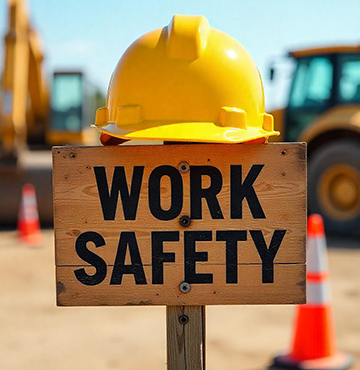Published: January 21, 2015 Updated: April 01, 2025
Navigating 2024: Essential OSHA Standard Revisions for Employers
 The Occupational Safety and Health Administration (OSHA) continually updates its standards to ensure the safety and well-being of American workers. In 2024, employers faced several crucial changes that demand attention. Understanding these revisions is not just about compliance; it's about fostering a safer work environment and preventing workplace injuries and fatalities. This article outlines the essential OSHA standard revisions for employers.
The Occupational Safety and Health Administration (OSHA) continually updates its standards to ensure the safety and well-being of American workers. In 2024, employers faced several crucial changes that demand attention. Understanding these revisions is not just about compliance; it's about fostering a safer work environment and preventing workplace injuries and fatalities. This article outlines the essential OSHA standard revisions for employers.
Hazard Communication Standard Updates
One of the significant updates involves the Hazard Communication Standard (HCS). OSHA has aligned the HCS with the seventh revised edition of the Globally Harmonized System of Classification and Labelling of Chemicals (GHS). This alignment brings about several changes, primarily concerning the classification of health and physical hazards, label requirements, and safety data sheets (SDS).
Specifically, employers must now ensure that chemical labels include updated pictograms, hazard statements, precautionary statements, and signal words. The SDS also require modifications to reflect the new GHS revisions, ensuring that workers have access to comprehensive and accurate information about chemical hazards. These changes aim to enhance clarity and consistency in hazard communication, reducing the likelihood of chemical-related incidents. You can view the specific changes on the OSHA website: OSHA Hazard Communication.
Injury and Illness Reporting Requirements
OSHA has also implemented changes to injury and illness reporting requirements. Employers in specific high-hazard industries are now required to electronically submit injury and illness data more frequently. This increased transparency allows OSHA to identify trends and intervene more effectively to prevent workplace injuries. The data collected helps OSHA target its enforcement efforts and provide resources to industries with higher injury rates.
Employers must adhere to the updated electronic submission requirements, ensuring accurate and timely reporting. Failure to comply can result in significant penalties. You can review the reporting requirements here: OSHA Injury Reporting.
Updates to PPE standards focus on ensuring that equipment fits properly and provides adequate protection for diverse worker populations. OSHA emphasizes the importance of conducting hazard assessments to determine the appropriate PPE for specific tasks and environments. Employers must also provide training on the proper use, maintenance, and storage of PPE.
New guidelines address the need for PPE that accommodates various body sizes and shapes, including those of women and individuals with diverse physical characteristics. This ensures that all workers have access to PPE that fits correctly and provides effective protection. Employers are encouraged to consult the latest PPE standards and conduct regular assessments to ensure compliance. You can find information on PPE standards on the OSHA website: OSHA Personal Protective Equipment.
Heat Illness Prevention
With increasing global temperatures, OSHA has intensified its focus on heat illness prevention. New guidelines emphasize the importance of providing workers with access to water, rest, and shade. Employers are also required to implement acclimatization programs for new workers and those returning after an extended absence.
OSHA's heat illness prevention initiatives aim to protect workers in outdoor and indoor environments where heat exposure is a concern. Employers must develop heat illness prevention plans that address specific workplace conditions and implement measures to mitigate heat-related risks. The OSHA website provides resources and guidance on heat illness prevention: OSHA Heat Illness Prevention.
Emergency Response and Preparedness
OSHA has also updated its standards related to emergency response and preparedness. Employers are now required to develop comprehensive emergency action plans that address a range of potential hazards, including fires, chemical spills, and natural disasters. These plans must include procedures for evacuation, communication, and medical assistance.
Regular drills and training sessions are essential to ensure that workers understand their roles and responsibilities during emergencies. Employers must also coordinate with local emergency responders to ensure a coordinated response. The OSHA website provides guidance on emergency response and preparedness: OSHA Emergency Preparedness.
Enforcement and Penalties
It is important to note that OSHA actively enforces its standards, and penalties for non-compliance can be substantial. Employers must stay informed about the latest regulations and implement effective safety programs to protect their workers and avoid costly fines. Regular audits and inspections can help identify potential hazards and ensure compliance with OSHA standards. Employers should take advantage of OSHA’s consultation services, which provide guidance and assistance in developing and implementing safety programs.
Staying informed about these changes is crucial for employers across various industries. By understanding and implementing the new OSHA standards, employers can create safer workplaces, reduce the risk of injuries and illnesses, and ensure compliance with federal regulations. Continuous training and education are essential to maintain a safe and healthy work environment.
Mapcon / 800-922-4336
MAPCON CMMS software empowers you to plan and execute PM tasks flawlessly, thanks to its wealth of features and customizable options. Want to see it for yourself? Click the button below to get your FREE 30-day trial of MAPCON!
Try It FREE!